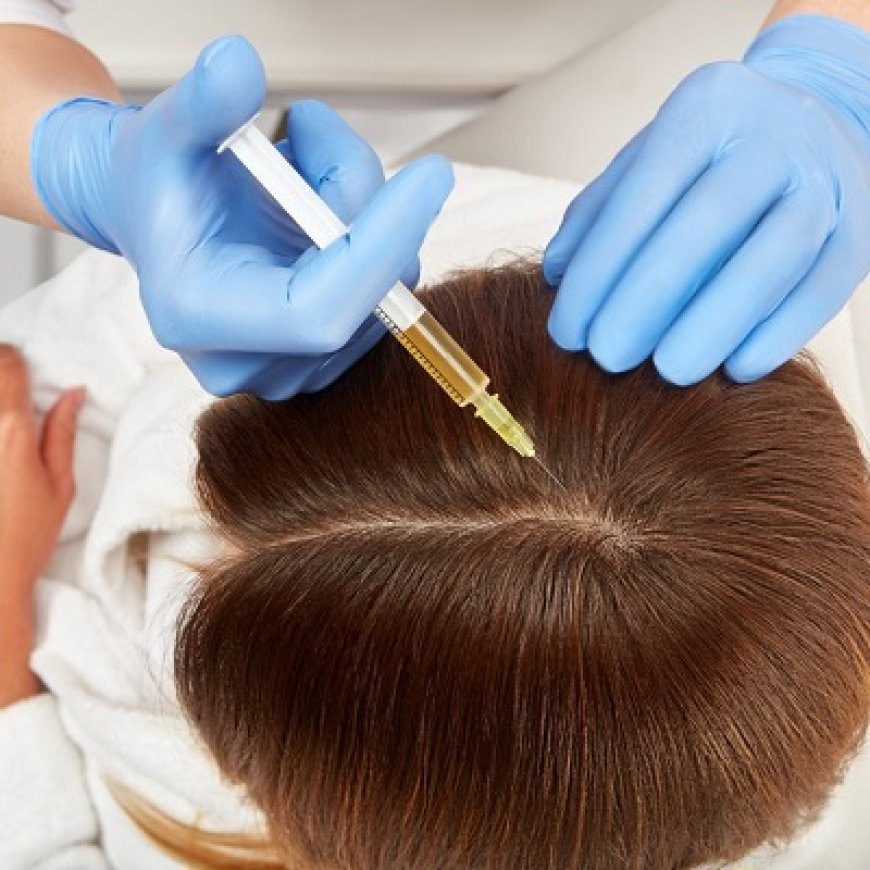Is PRP Painful?
Discover how PRP hair treatment promotes hair growth using your body's healing properties for fuller, healthier hair with minimal discomfort.

Platelet-Rich Plasma (PRP) therapy has gained popularity as a treatment for various conditions, including hair loss, joint pain, and skin rejuvenation. While many individuals seek out this innovative treatment for its potential benefits, concerns about discomfort and pain often arise. So, is PRP painful? In this blog, we’ll explore the PRP procedure, what patients can expect during treatment, and how to manage any discomfort.
What is PRP Therapy?
PRP therapy in Islamabad involves drawing a small amount of the patient's blood and processing it to concentrate the platelets and growth factors. This platelet-rich solution is then injected into the targeted area, whether it's the scalp for hair restoration, the knee for joint pain, or the face for skin rejuvenation. The growth factors in PRP promote healing and regeneration, making it a popular choice for various medical and cosmetic applications.
The PRP Procedure:
- Consultation and Preparation: Before the procedure, patients typically undergo a consultation with a healthcare provider. This discussion involves reviewing medical history, assessing the area to be treated, and setting realistic expectations for the results.
- Blood Draw: The first step in the PRP process is drawing blood from the patient, similar to a routine blood test. This part of the procedure is generally quick and causes minimal discomfort, akin to the feeling of a standard needle prick.
- Centrifugation: Once the blood is drawn, it is placed in a centrifuge, which spins the sample at high speed to separate the platelets from the other components of the blood. This process takes about 10-15 minutes.
- Injection of PRP: After processing, the concentrated PRP is drawn into a syringe and injected into the targeted area. This is the stage where patients may experience varying levels of discomfort.
How Painful is PRP Therapy?
The level of pain or discomfort during PRP therapy can vary based on several factors, including the individual’s pain tolerance, the specific area being treated, and the technique used by the healthcare provider.
- Injection Sensation: When the PRP is injected, patients typically feel a pinch or a sting. The sensation is often described as similar to receiving a vaccine. Some individuals may feel a brief, sharp pain followed by a dull ache as the solution is injected.
- Pain Management: To minimize discomfort, many practitioners use topical anesthetics on the skin before injecting PRP. This numbing cream helps reduce the sensation of the injections. Additionally, some clinics use ice packs before and after the procedure to soothe the area.
- Post-Treatment Sensitivity: After the injections, some patients may experience mild swelling, tenderness, or bruising in the treated area. These symptoms usually resolve within a few days. Over-the-counter pain relievers, such as acetaminophen or ibuprofen, can help manage any discomfort.
What to Expect After PRP Treatment:
Most patients can return to their normal activities shortly after PRP therapy. However, it is advisable to avoid strenuous exercise, heavy lifting, or activities that may cause excessive sweating for 24-48 hours post-treatment.
Some individuals may notice immediate changes in the treated area, but significant results often take several weeks to manifest, especially in the case of hair restoration. This delayed effect is due to the natural healing process stimulated by the growth factors in PRP.
Managing Anxiety and Pain Perception:
Many people experience anxiety about medical procedures, which can amplify their perception of pain. Here are some strategies to manage anxiety and enhance comfort during PRP therapy:
- Open Communication: Discuss any concerns or fears with your healthcare provider prior to the procedure. They can explain the steps involved and provide reassurance.
- Relaxation Techniques: Practice deep breathing exercises or meditation before the appointment to help calm nerves. Listening to music or guided meditations can also create a more relaxed atmosphere during the procedure.
- Bring a Support Person: Having a friend or family member accompany you can provide emotional support and help ease anxiety during the treatment.
Conclusion: Is PRP Painful?
In summary, PRP therapy may involve some discomfort, particularly during the injection process, but most patients find the pain manageable. The initial blood draw typically causes minimal discomfort, and the injections can be made more tolerable with the use of topical anesthetics and other pain management techniques.
While some mild swelling or tenderness may occur post-treatment, these side effects usually subside within a few days. If you're considering PRP therapy but are concerned about pain, discussing your worries with your healthcare provider can help alleviate fears and provide a clearer understanding of what to expect. Ultimately, many patients find that the potential benefits of PRP therapy—such as improved hair growth, joint pain relief, or enhanced skin texture—far outweigh any temporary discomfort experienced during the procedure.
For more information visit Dynamic Clinic PK.
What's Your Reaction?























